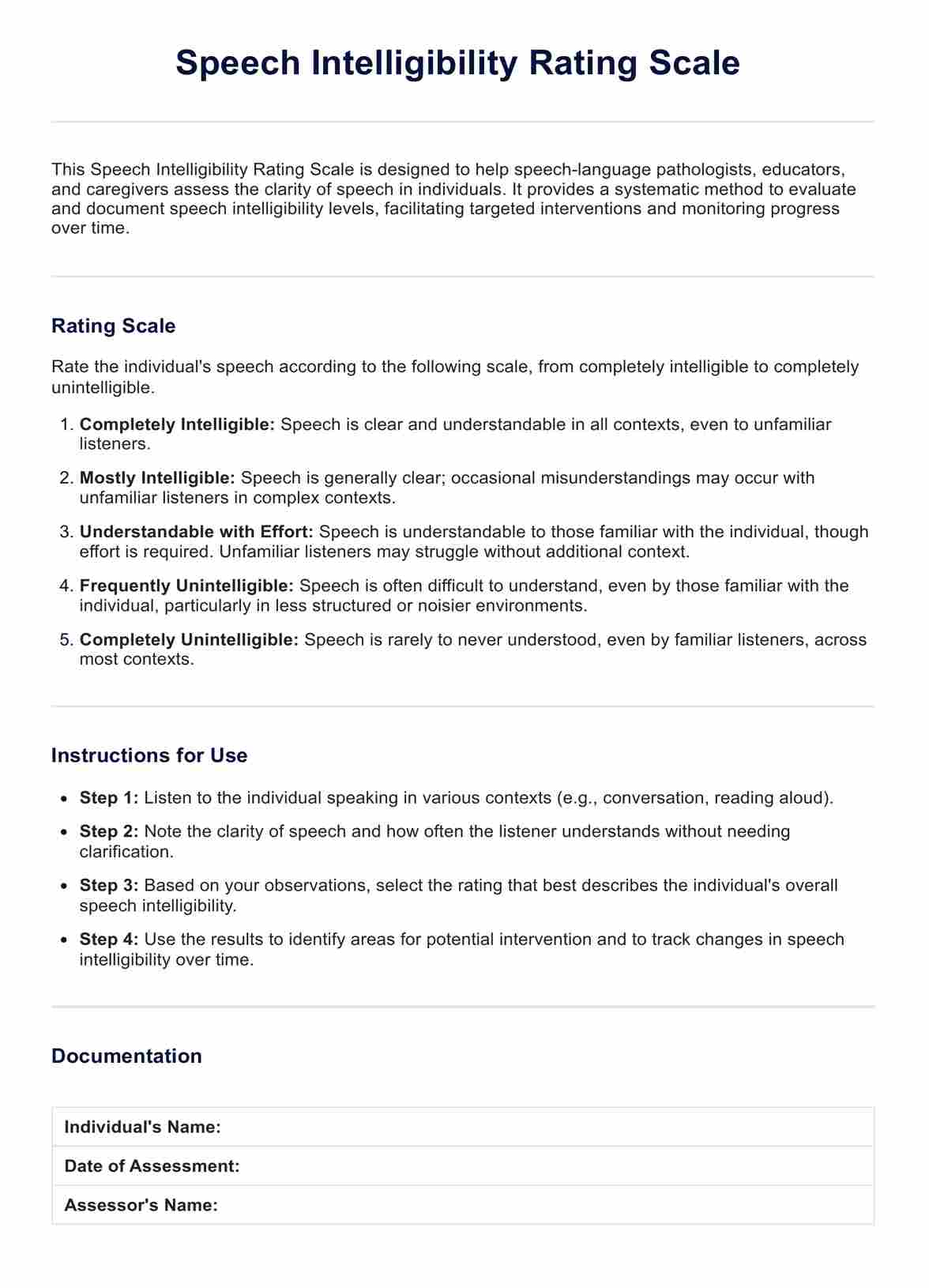Speech intelligibility is measured through standardized tests where listeners rate the clarity of spoken words, transcription methods calculating the percentage of correctly understood words, and sometimes through acoustic analyses. These methods assess how clearly speech sounds are articulated and understood by others.

Speech Intelligibility Rating Scale
Download our Speech Intelligibility Rating Scale to assess and improve clarity in speech. Perfect for therapists and educators. Enhance communication now.
Speech Intelligibility Rating Scale Template
Commonly asked questions
Unintelligible speech can hinder learning, affecting phonological awareness, reading, writing, and social interactions. It may lead to frustration, reduced self-esteem, and social withdrawal, emphasizing the importance of early intervention.
Yes, with targeted therapy from speech-language pathologists, speech intelligibility can improve significantly. Therapy plans often include articulation therapy, phonological activities, and auditory training tailored to the individual's needs. Early assessment and consistent therapy enhance speech clarity and effective communication.
EHR and practice management software
Get started for free
*No credit card required
Free
$0/usd
Unlimited clients
Telehealth
1GB of storage
Client portal text
Automated billing and online payments











